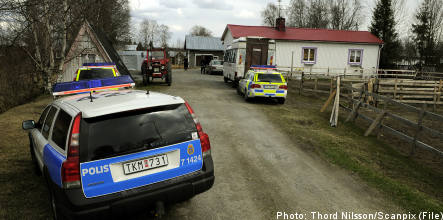The two sons in the family were sentenced to six years each in jail for acting as an accomplice to attempted murder. Luleå District Court also ordered the men to pay the victim a joint sum of 230,000 kronor ($29,000) in damages.
Their 73-year-old father, two sisters and a friend of the family were awarded six to eight month sentences for harbouring a known criminal.
A third son was requested to undergo a psychiatric evaluation after the court found that he too had been involved in the attack.
The 47-year-old victim was seriously injured in May when he was attacked with an axe in the village of Vojakkala, north of Haparanda.
The man had previously resided in the village, and was in the area on a visit when he was assaulted by his former neighbours.
The neighbouring family charged in the attack has been involved in an ongoing feud with their neighbours which has come to a head during the past year.
Besides the axe attack, the feud has also featured stone throwing, assault, and gunfire.
A key piece of evidence for the prosecution was a film clip of what happened in connection with the attack against the 47-year-old.
The recording was made with a camera the victim had placed on the roof of his car when he visited his former home.
The attack landed the victim in hospital with life threatening injuries.
In addition to widespread skeletal injuries, the 47-year-old’s right eye was so badly damaged that it had to be surgically removed.
The victim had moved to Vojakkala in 2001, and three years later things started to heat up between him and his neighbours.
The feud resulted in several complaints to the police from both sides, with the 47-year-old being convicted of verbal threats lodged against the sisters of the neighbouring family.



 Please whitelist us to continue reading.
Please whitelist us to continue reading.